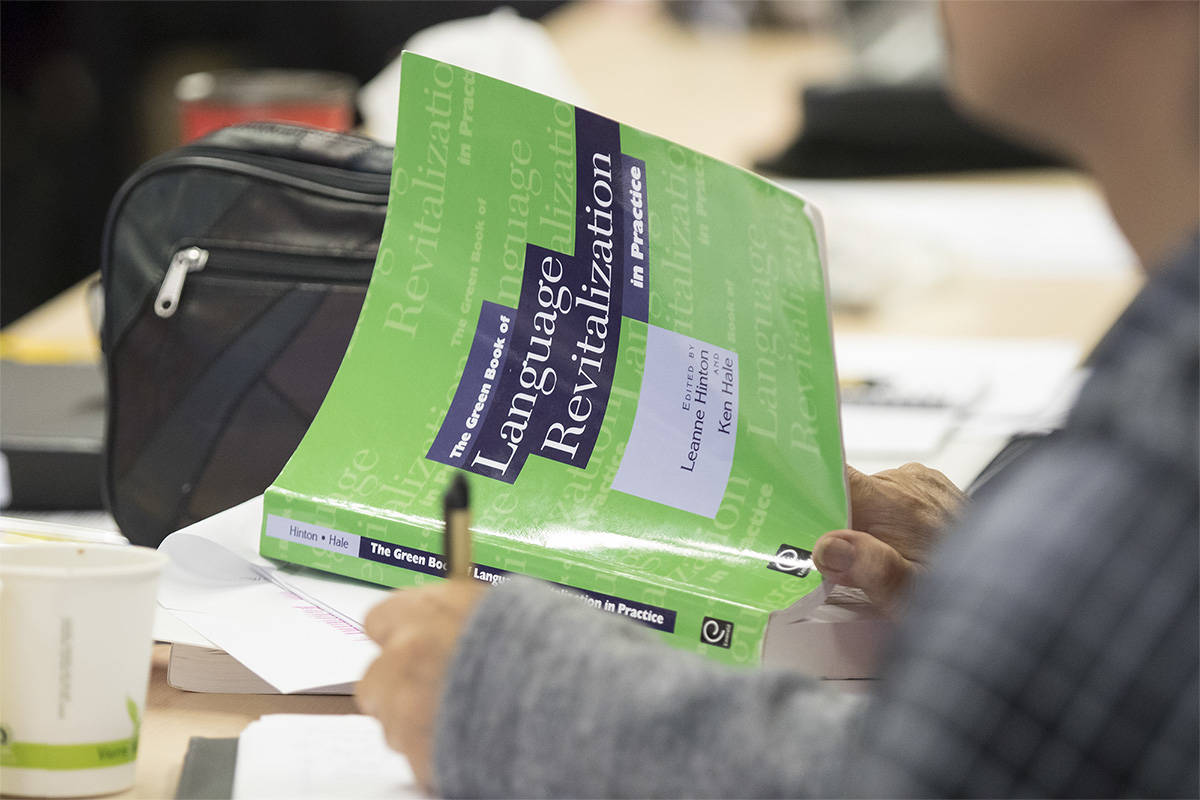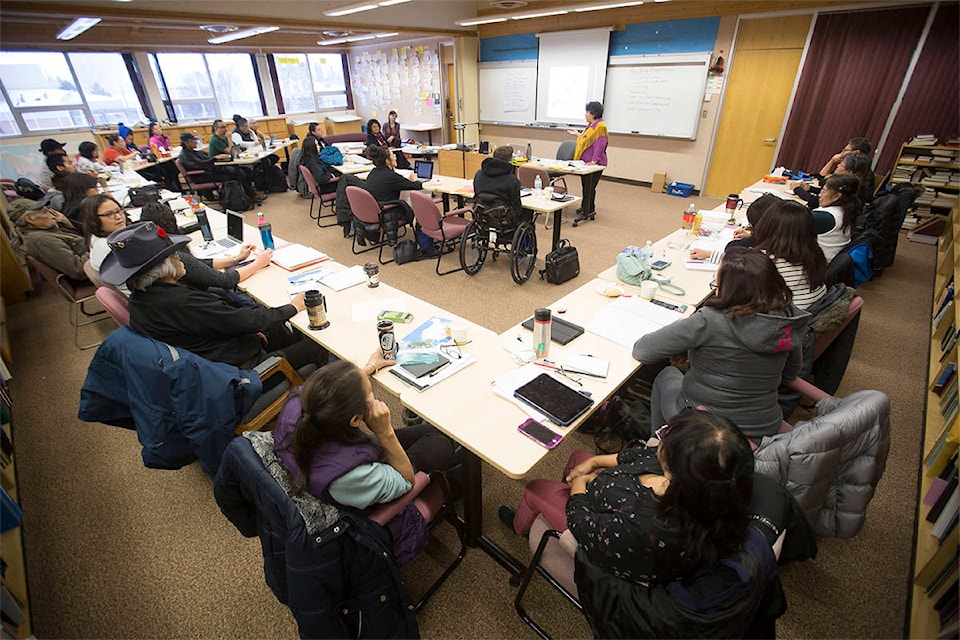Resurrecting endangered languages is what the Yukon Native Language Centre is doing as part of its language proficiency certificate program — and to do that requires studying what went so wrong.
“That’s where we learn about what our languages were like before contact,” said director Tina Jules, noting that it covers off the assimilation policies that were instigated by the federal government.
Part and parcel of the course is to conceptualize what revitalizing languages means and the history behind them. That means looking to what other Indigenous communities out-of-territory and across the world have done to regain that part of their cultures.
“Understanding those connections to our ancestors, our culture, our worldviews, our sense of identity,” Jules said. “That’s all at risk if we don’t have our language in the future in a way where our language is fully alive, not just in the home, but in the community, as well.”
The hope is that there will be a pool of fluent speakers, which subsequent generations can learn from.
But in order to do that, it was understood from the get-go there would need to be a course showing why languages were stripped away from Indigenous people in the first place, which is where the revitalization course comes in.
“We’re moving forward with what can we do,” Jules said, noting that, coupled with the rest of the certificate, First Nations’ languages can be revived, in part, by setting up supports at the community level.
On Dec. 5, Lizzie Hall, an elder from Pelly Crossing, sat in on the class.
Hall is a testament to up-and-coming Indigenous language speakers — if she can learn her language, so can they, in a sense.
She’s a survivor of residential school, a place where children were restricted from speaking their birth languages, which, over time, meant that many families lost the capability and will to speak them.
“We lost a language, and I think about these children, about a language of today for tomorrow,” she said.
Hall said that pre-residential school, her whole family, including herself could speak their language. At least she had that, she said, but it’s different for youth now because they don’t have the same access she did. This is why taking steps to formally restore languages through institutions is so important, she said.
“I’m really happy that this started,” she said. “If a person is willing (to learn), it can happen.”
Devin Brodhagen, who is one of 28 students taking the course this week, said there’s only been talk about the need to revive lost languages recently.
But that’s changed.
“Now, we’re strategically looking at ways of actually doing it,” he said.
Brodhagen works with many First Nations youth as an educational assistant at Watson Lake Secondary School. Through his work he’s observed listlessness from some students, which he wants to change, urgently.
“You can see they don’t have a sense of belonging,” he said. “They’re kind of, like, lost. They don’t know which direction to go.
“Getting the youth back into their culture is a way of healing and finding a place of belonging,” said Brodhagen, noting that he will transfer what he’s picked up in the course back to his community.
“I want to help make (language learning) grow,” he said, adding that he wants to become a fluent speaker and, eventually, teach.
Now, there are actual goals to bolster fluency, said Khagane Jules, who’s also taking the course.
“Our language, for me, is everything about us,” she said. “It tells you your history, where you’re from, it’s our way of communicating as First Nations people about the world we live in.”
Contact Julien Gignac at julien.gignac@yukon-news.com

